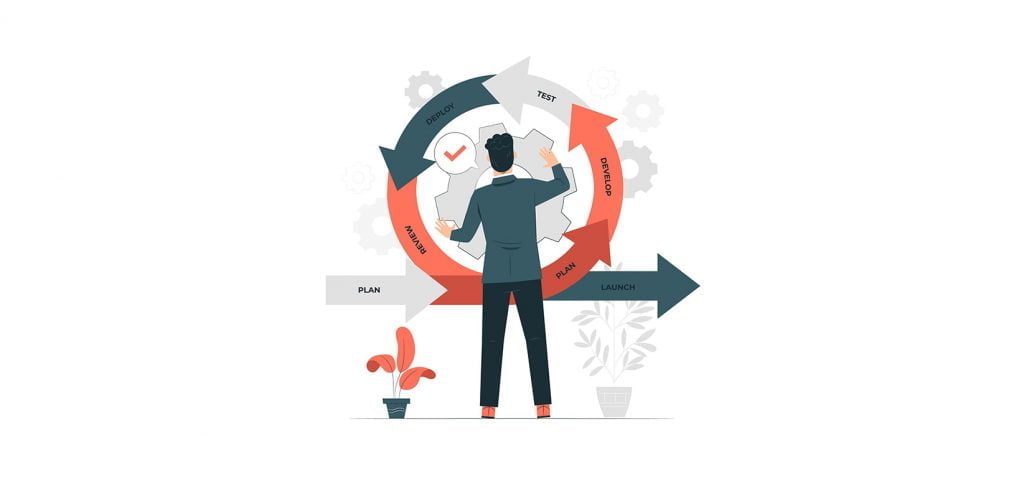Types of Resumes and When to Use Them

In a job search, a resume is a key tool that helps applicants showcase their professional skills and experience to potential employers.
There are several types of resumes, each reflecting specific aspects of professional experience and designed for different purposes. In this article, we will explore the main types of resumes and provide recommendations on when it is best to use them.
1. Chronological Resume
1.1 Definition and Structure
A chronological resume is the most traditional and common type of resume. It presents a sequential account of work experience, starting with the most recent position and ending with the earliest one.
Structure of a chronological resume:
- Contact information
- Career objective*
- Work experience
- Education
- Additional information (skills, languages, certifications)
1.2 Advantages and Disadvantages
Advantages of a chronological resume:
- Easy for employers to read and understand
- Suitable for candidates with a clear career trajectory
- Demonstrates stability and duration of work experience
Disadvantages of a chronological resume:
- Not suitable for applicants with employment gaps
- Not ideal for switching to a different field of work
- May not reflect the full breadth of a candidate's experience and skills
1.3 When to Use
It is recommended to use a chronological resume when:
- You have a stable career history without significant employment gaps
- You are seeking employment in the same field where you have previously worked
- Your work experience is more important than education or specific skills
2. Functional Resume
2.1 Definition and Structure
A functional resume focuses on skills and achievements rather than a chronological work history. This type of resume is suitable for those who want to change their field of work or have employment gaps.
Structure of a functional resume:
- Contact information
- Career objective*
- Skills and competencies
- Education
- Brief summary of work experience
- Additional information (languages, certifications)
2.2 Advantages and Disadvantages
Advantages of a functional resume:
- Emphasizes skills and competencies rather than work experience
- Suitable for those changing their field of work
- Conceals employment gaps
Disadvantages of a functional resume:
- May raise suspicions with employers
- Harder to track the candidate's career progression
2.3 When to Use
It is recommended to use a functional resume when:
- You want to switch to a different field of work
- You have employment gaps
- Your skills and competencies are more important than work experience
3. Combination Resume
3.1 Definition and Structure
A combination resume combines elements of both the chronological and functional resumes, allowing the candidate to showcase their skills, achievements, and work history.
Structure of a combination resume:
- Contact information
- Career objective*
- Skills and competencies
- Work experience (including dates and companies)
- Education
- Additional information (languages, certifications)
3.2 Advantages and Disadvantages
Advantages of a combination resume:
- Reflects all aspects of the candidate: skills, achievements, and work experience
- Suitable for candidates with diverse experience and skills
- Convenient for employers to track the candidate's career progression
Disadvantages of a combination resume:
- May be more extensive compared to other resume types
- Requires careful preparation and structuring of information
- Can be challenging for the candidate to determine which aspects to emphasize
3.3 When to Use
A combination resume is recommended to use when:
- You have diverse work experience that you want to showcase
- You want to highlight your skills, achievements, and work experience
- You are seeking a job that requires a wide range of competencies
4. Targeted Resume
4.1 Definition and Structure
A targeted resume is a resume that is tailored to a specific job position or company. It is prepared considering the requirements and expectations of a particular employer, allowing the candidate to demonstrate their relevance to the position.
Structure of a targeted resume:
- Contact information
- Career objective* (specific to the job position)
- Skills and competencies (aligned with the job requirements)
- Work experience (with a focus on relevant experience)
- Education
- Additional information (languages, certifications)
4.2 Advantages and Disadvantages
Advantages of a targeted resume:
- Suitable for a specific job position or company
- Allows the candidate to demonstrate their relevance to the position
- May increase the chances of getting selected for an interview
Disadvantages of a targeted resume:
- Requires more time and effort for preparation
- Not suitable for mass distribution
- May require creating multiple versions of the resume
4.3 When to Use
A targeted resume is recommended to use when:
- You are focused on a specific job position or company
- You want to demonstrate your relevance to the position
- You are willing to invest time in careful resume preparation
Comparative Table
Below is a comparative table for all types of resumes:
| Resume Type | Advantages | Disadvantages | When to Use |
|---|---|---|---|
| Chronological | Highlights career stability; shows professional growth; convenient for employers to quickly review work experience. | May emphasize career gaps; less suitable for those who frequently change jobs or fields. | If you have a stable career history. |
| Functional | Highlights professional skills; suitable if you have significant gaps in work experience or are changing fields. | Less convenient for employers to quickly review work experience; may not emphasize career progression. | If you have significant gaps in work experience or are changing fields. |
| Combination | Highlights both work experience and professional skills; suitable if you have a stable career history. | Less reader-friendly compared to chronological or functional resumes; may not be suitable if you have significant gaps in work experience or are changing fields. | If you want to highlight both work experience and professional skills. |
| Targeted | Allows highlighting qualifications and skills relevant to a specific job; demonstrates initiative and interest in the company. | Less versatile than other resume types; requires additional effort and time for creation. | If you are targeting a specific job position and want to emphasize your fit for that position. |
Conclusion
The choice of resume type depends on your professional situation, goals, and preferences. The chronological resume is suitable for candidates with a specific career trajectory, the functional resume is for those who want to change fields or hide employment gaps, the combination resume is versatile and suitable for candidates with diverse experience, and the targeted resume allows you to best demonstrate your relevance to a specific job.
When choosing a resume type, consider your situation as well as the preferences and requirements of potential employers. This will help you better showcase your skills and experience and increase your chances of success in your job search.
*What is a “Career Objective”?
A career objective is a brief and clear statement that indicates your goal in job searching. A career objective should reflect the type of job you are seeking, the skills and experience you would like to utilize, and the value you can offer to a potential employer.
In general, a career objective can help employers quickly understand your goals and motivation in job searching, which can increase your chances of securing the desired position. It can also help you focus on specific job opportunities that align with your career goals and skills.
For example, a career objective might sound like: “I am seeking a position in the marketing field where I can apply my experience in digital marketing and enhance the online presence of the company. I aim to develop my skills in SEO and SMM and contribute my knowledge and experience to the marketing team.”
A career objective can be included at the beginning of your resume or in a cover letter when applying for a job. It should be specific, clear, and tailored to a particular job opportunity to make the most positive impression on employers.
Recommend0 recommendations





Responses